
Quarterly Gou Vaarta contains interesting articles,cow breeds ,events and activities organized by GoPals team across India as part of this digital magazine.
Highlights of Quarter 4 2020 Gou Vaarta
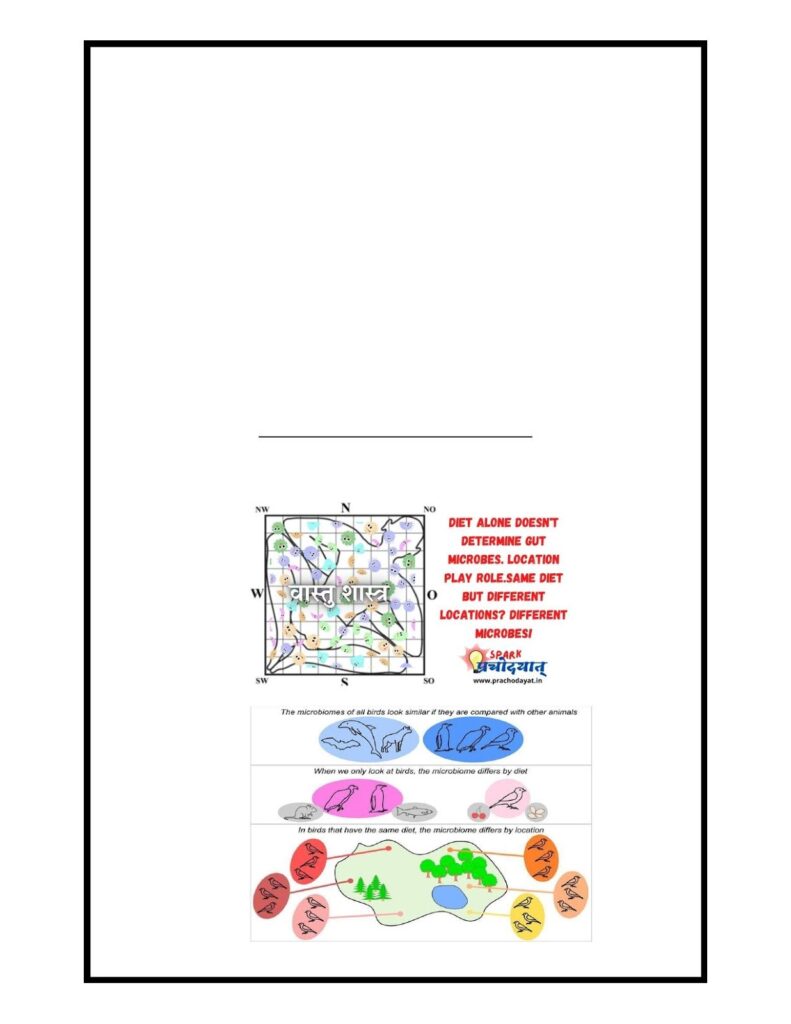
Brown-headed Cowbirds (Molothrus ater) are the most widespread avian brood parasite in North America, laying their eggs in the nests of approximately 250 host species that raise the cowbird nestlings as their own. It is currently unknown how these heterospecific hosts influence the cowbird gut microbiota relative to other factors, such as the local environment and genetics. We test a Nature Hypothesis (positing the importance of cowbird genetics) and a Nurture Hypothesis (where the host parents are most influential to cowbird gut microbiota) using the V6 region of 16S rRNA as a microbial fingerprint of the gut from 32 cowbird samples and 16 potential hosts from nine species. We test additional hypotheses regarding the influence of the local environment and age of the birds. We found no evidence for the Nature Hypothesis and little support for the Nurture Hypothesis. Cowbird gut microbiota did not form a clade, but neither did members of the host species. Rather, the physical location, diet and age of the bird, whether cowbird or host, were the most significant categorical variables. Thus, passerine gut microbiota may be most strongly influenced by environmental factors. To put this variation in a broader context, we compared the bird data to a fecal microbiota dataset of 38 mammal species and 22 insect species. Insects were always the most variable; on some axes, we found more variation within cowbirds than across all mammals. Taken together, passerine gut microbiota may be more variable and environmentally determined than other taxonomic groups examined to date.
https://pubmed.ncbi.nlm.nih.gov/24711971/
It's all the Gut, Microbiome world that needs stability. Western Science is more into deeper Introspection of Mircobial World .Why River Basin Based Settlements & Sync with Native Cows Matters?
Your Gut = Sync with Local Environment
Think Sustainability = Live Locally
Family Health Matters.
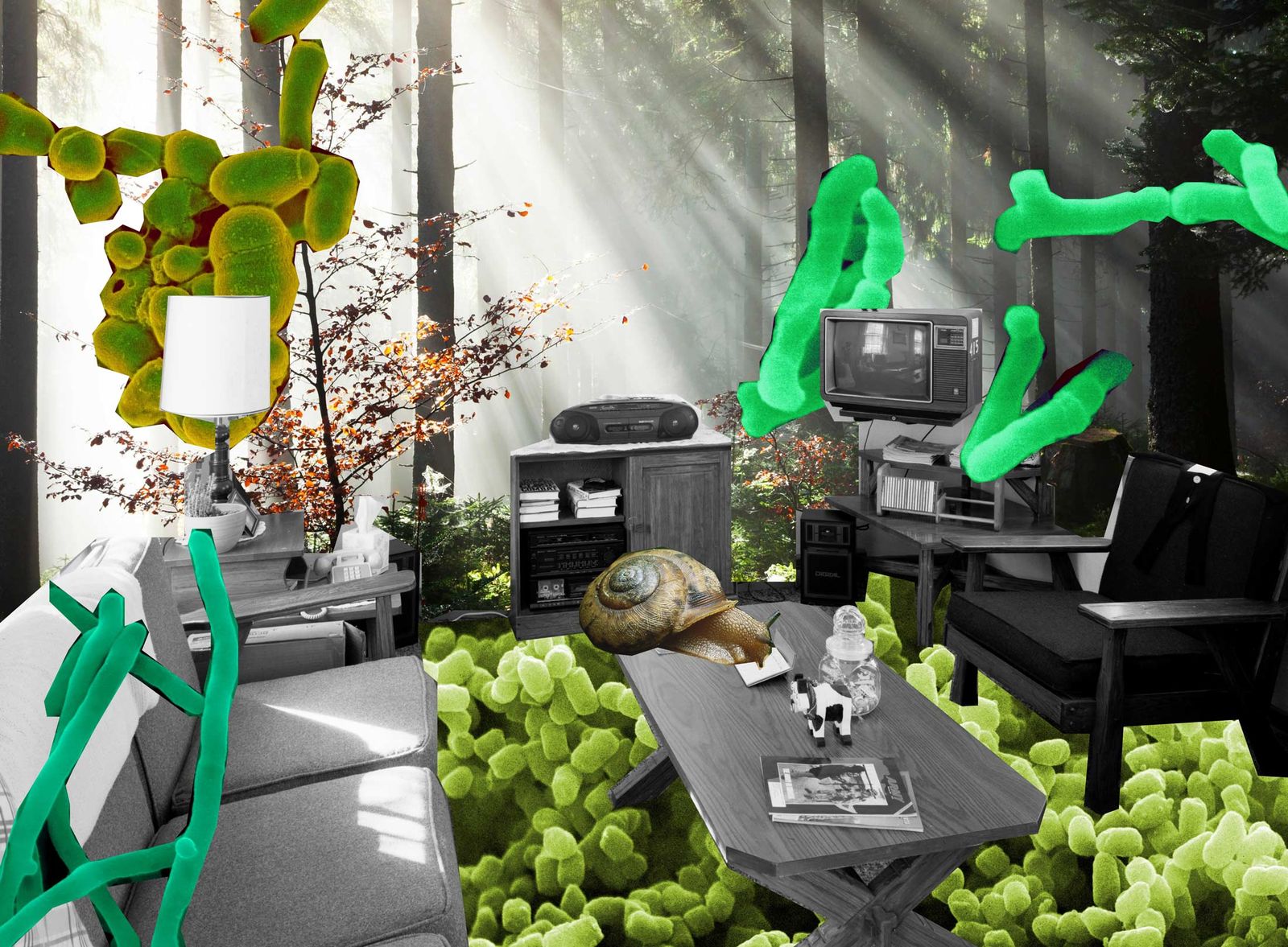
Four years ago a doctoral student in architecture asked Luke Leung to help him come up with a thesis topic. Leung, an engineer whose projects include the world’s tallest building, the Burj Khalifa in Dubai, proposed the question: What is heaven?
“The student did a lot of research and found that no matter the faith—Islam, Judaism, Christianity—heaven is always a place with a garden and running water,” recalls Leung, director of the sustainable engineering studio of Skidmore Owings & Merrill, the architectural behemoth better known as SOM. “So then we started questioning, ‘If that is heaven, what exactly is the place we are living in?’ ”
In the Western world, humans spend 90% of their time indoors. The average American spends even more than that—93%—inside buildings or cars. For years scientists have sounded the alarm that our disconnect from the outdoors is linked to a host of chronic health problems, including allergies, asthma, depression, irritable bowel syndrome, and obesity. More recently, experts in various fields have begun studying why buildings, even those designed to be as germ-free as possible, are vectors for disease, not the least Covid-19.
“There was a study of more than 7,300 cases in China, and guess how many people caught the disease outdoors?” Leung asks. “Just two.” Early testing following Black Lives Matter protests in Minnesota also suggested that transmission of SARS-CoV-2 outside is rare, even when thousands of people gather, talking, yelling, and chanting—at least when most of those people wear masks. Out of more than 13,000 protesters tested, only 1.8% were positive. Other states showed similar results.
Leung says a “misalignment with nature” in building design is partly to blame for our scourge of chronic diseases and the current pandemic. The relative lack of air flow and sunlight is an obvious issue; temperature, humidity, and indoor air pollution also play a role. But there’s another, less discussed factor: the microbiome of the built environment, which encompasses trillions of microbes including bacteria, fungi, and viruses.
Until about 15 years ago, very few scientists—and even fewer architects, designers, and engineers—paid attention to indoor microbes, with the exception of problematic outcroppings such as black mold and legionella, the bacteria that causes Legionnaires’ disease. That changed after the 2001 anthrax attacks, when letters laced with deadly bacteria were mailed to politicians and the offices of news outlets, killing 5 people and infecting 17 more. Experts at the nonprofit Alfred P. Sloan Foundation began contemplating what role buildings might play in mitigating bioterrorism threats. Realizing we knew almost nothing about which microbes exist indoors, the foundation poured tens of millions of dollars into research. Soon scientists uncovered rich ecologies of fast-evolving indoor microbe populations. Crucially, most had little overlap with outdoor populations, including salutary species that humans co-evolved with over millions of years.
Now, with a global pandemic raging, these researchers are suddenly in demand. “Our calendar is fairly full,” says Kevin van den Wymelenberg, director of the Biology and the Built Environment Center at the University of Oregon. He used to receive two or three inquiries per week, asking for advice on how to improve the health of a building. Now he gets 20 a day. “It’s everyone from hospitals, to large commercial real estate portfolios, to nursing homes and school districts, to personal friends who run a barber shop and are trying to decide whether or not they should blow out the hair of their patrons.”
Of course, the most urgent microbe-related question is where to find SARS-CoV-2 and how to kill it. Beyond that, there are also long-term questions. How can we promote indoor microbe populations that don’t make us chronically ill or harbor deadly pathogens? Can we actually cultivate beneficial microbes in our buildings the way a farmer cultivates a field? Experts including Van den Wymelenberg are confident all this is possible. “I really believe our building operators of the future and our designers will be thinking about how to shape the microbiome,” he says.
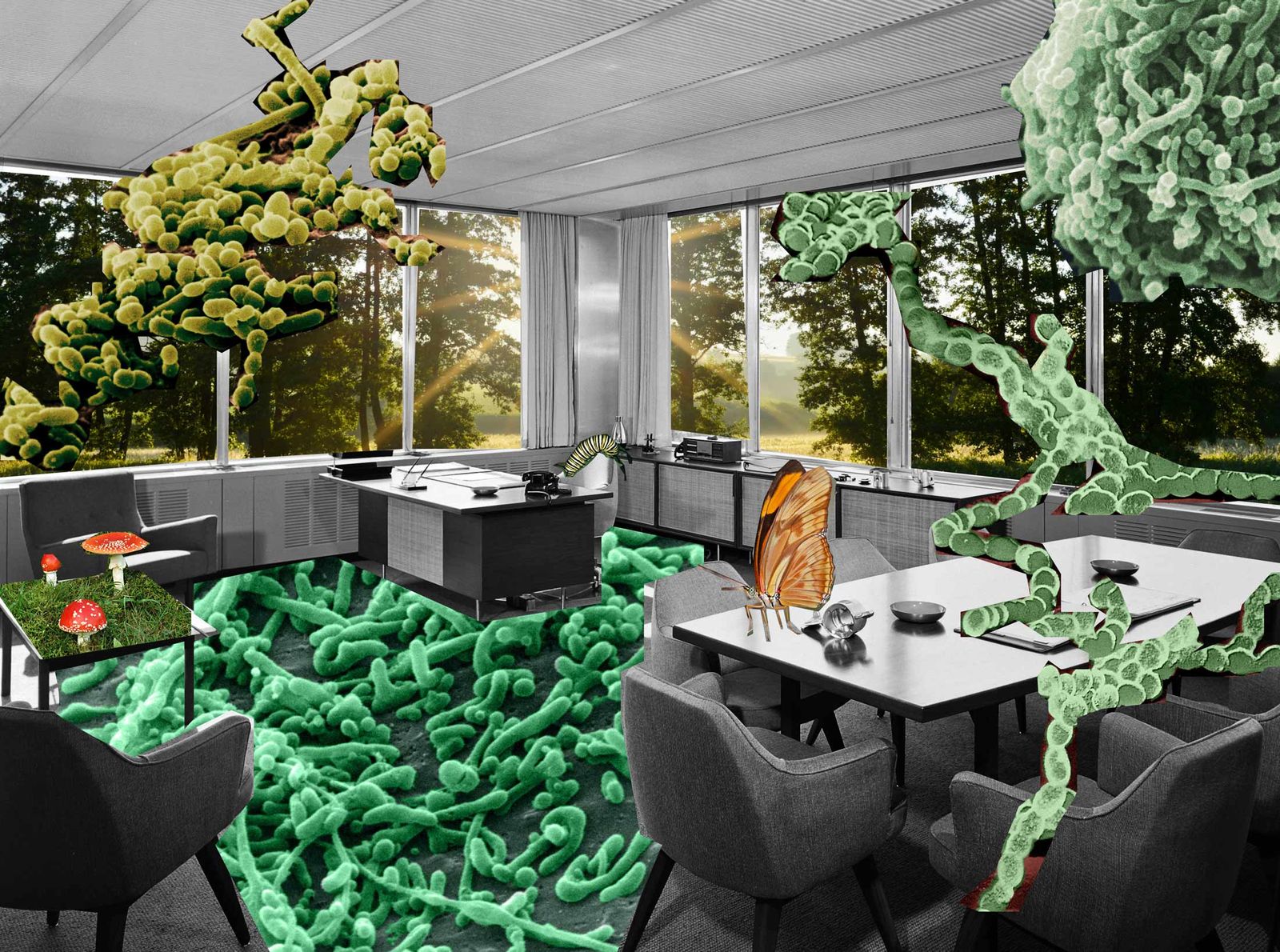
The term “microbiome” is most often used to refer to the population of microbes that inhabit our body, many of which help produce vitamins, hormones, and other chemicals vital to our immune system, metabolism, mood, and much more. In the typical person, microbial cells are as numerous as those containing human DNA and cumulatively weigh about 2 pounds. In recent decades our personal microbiomes have been altered by factors such as poor dietary habits, a rise in cesarean-section births, overprescription of antibiotics, overuse of disinfectants and other germ fighters, and dwindling contact with beneficial microbes on animals and in nature. According a 2015 study, Americans’ microbiomes are about half as diverse as those of the Yanomami, a remote Amazonian tribe.
Like our bodies, the buildings we inhabit are also teeming with microbes. “Inhale deeply,” writes Rob Dunn, a professor of applied ecology at North Carolina State University, in his 2018 book Never Home Alone. “With each breath you bring oxygen deep into the alveoli of your lungs, along with hundreds or thousands of species. Sit down. Each place you sit you are surrounded by a floating, leaping, crawling circus of thousands of species.” Dunn says more species of bacteria have been found in homes than there are species of birds and mammals on Earth. In 2015, researchers found that indoor air contains nearly equal concentrations of bacteria and viruses. (Almost all viruses are harmless, and some may be beneficial.) Over time these many microbes have adapted to survive, and even thrive, everywhere from our pillowcases and toothbrushes to the more extreme climates of our dishwashers, showerheads, ovens, and freezers.
Many are derived from humans, or likely feed off human debris. Like Pigpen from the comic strip Peanuts, each of us has a plume of microbes spewing off our body at a rate of about 37 million bacteria and 8 million fungal particles per hour; the difference is that our plumes are invisible to the naked eye. Indoors, the impact is measurable. One study notes that it takes less than 24 hours for a hotel guest to colonize a room with their personal microbes, erasing all traces of previous guests and making the space microbially identical to their home.
Outdoors our invisible plumes almost always disperse quickly, which is a very good thing in the case of Covid carriers. “Any virus that is released into the air is rapidly diluted, moved by wind currents, and spread out across a seemingly infinite space,” says Linsey Marr, an expert in infectious disease transmission and professor of civil and environmental engineering at Virginia Tech. “It’s almost like putting a drop of dye into the ocean vs. putting it into a glass of water.” Sunlight also inactivates viruses in as little as five minutes—eight minutes in the case of SARS-CoV-2. A study from the Department of Homeland Security found that the coronavirus can hang around indoors in the dark for hours.
Facing an invisible and potentially deadly virus, the understandable impulse has been to whip out some Clorox and go to battle. But indiscriminate bleach-bombing could backfire. For one thing, misdirected efforts may be a colossal waste of time and money. New York City, for example, announced in the spring that for the first time, it was closing the subway system during early-morning hours to deep-clean every train. “It’s all theater!” says Jack Gilbert, a professor and microbiome researcher at the University of California at San Diego. “You bleach the subway, the bleach dries up and becomes inactive. If just one person who has Covid-19 interacts with that surface, the four hours of cleaning have no effect.” And because we now know SARS-CoV-2 is most often transmitted through the air, cleaning efforts seem even more futile.
A more serious risk is that attempts to sterilize our surroundings can kill off bacteria critical for human health—or, even worse, inadvertently promote the survival and evolution of more dangerous bugs, including antibiotic-resistant superbugs. “We should be worried,” says Rob Knight, founding director of the Center for Microbiome Innovation and a professor of pediatrics at UCSD. “If we’re overzealously stripping off all the bacteria that would naturally be there, then we may be creating homes for bacteria and maybe even viruses that are harder to remove.”
No amount of chemicals will get rid of everything, and what’s left behind is often undesirable. Microbiologists have swabbed the International Space Station to find out what happens inside an enclosed, supposedly sterile chamber in which every bit of food and equipment has been disinfected within a specially designed NASA facility. As it turned out, microbes were everywhere, almost all of them human derived. Among the most common were bacteria associated with feces, stinky feet, and armpits, which is perhaps why the ISS has been described as smelling like a mix of plastics, garbage, and body odor.
Here on Earth, proper hygiene is effective in minimizing exposure to pathogens such as those that cause food poisoning and strep throat, but we tend to go nuclear, using harsh chemicals when soap and water could do the job. For years antimicrobials have been added to everything—wall paint, kitchen sponges, underwear, lip gloss. Now we’ve become more extreme.
“It’s just speculation, but we could see a blip where this generation of kids has more immune-related conditions”
In hopes of zapping SARS-CoV-2 straight out of the air, some building managers are installing so-called bipolar ionization units, even though they may not work against Covid and sometimes generate harmful gases such as the lung irritant ozone. As for the antimicrobial cleaning agents and surface coatings being liberally applied throughout offices and other public spaces, we may be introducing large quantities of poorly understood, potentially poisonous chemicals into our everyday life—as well as speeding the evolution of disastrous superbugs.
“The more we use the same antimicrobials in different contexts, the more opportunity these microbes have to develop resistance,” says Erica Hartmann, an engineering professor at Northwestern University who focuses on indoor microbiology and chemistry. “If they’re developing resistance to the antimicrobial itself, that’s not great, because then we’ve lost an important product in our cleaning arsenal. But if they also develop resistance to clinically relevant antibiotics, of which we have precious few, that’s an even bigger concern—and there’s evidence that both of those things happen.”
Wiping out good bacteria along with the bad has also been linked to chronic health problems. One often-cited series of studies, begun in 1998, examined the relationship between cleanliness and disease in the Finnish-Russian border region of Karelia, where people share similar genetics. On the wealthier, cleaner Finnish side, people were as many as 13 times more likely to suffer from inflammatory disorders as on the Russian side, where the majority live in rural homes, keep animals, and cultivate their own gardens.
Our pandemic-era anti-germ crusade may not have a big impact on the already formed microbiomes of adults. But infants and young children, who need exposure to a wide variety of microbes to train their developing immune systems, could be more adversely affected. “It’s just speculation, but we could see a blip where this generation of kids has more immune-related conditions,” Knight says, “especially in places where people have had to stay quarantined indoors, where kids didn’t get to go outside as much.”
Leung of SOM began thinking about the microbiology of buildings years before the pandemic. It’s not something he tends to mention to prospective clients. “If you tell a client, ‘Let’s talk about microbes,’ they’ll say, ‘Get out of here—next!’ ” he says. “We have to address it carefully.”
Beyond using organic materials and maximizing access to natural light and outdoor spaces, Leung says lots can be done to make buildings healthier at the microbial level. For safer air he extols the use of filters designed to eliminate SARS-CoV-2 and other pathogens and contaminants, but he cautions against bipolar ionization technology and says air shouldn’t be sterilized over long durations. Whenever possible, Leung suggests deploying ventilation systems that pump offices full of microbially diverse outdoor air. Among his current projects is the 31-story WeBank tower in Shenzhen, which upon completion in 2022 will draw air through trees planted on balconies before it’s funneled inside. “Sometimes we also open up buildings at night,” Leung says, noting that the outdoor air is first measured for pollutants. “During the day people want air conditioning, but when they’re gone you can recharge the building with microbes from outside.”
Proper ventilation is particularly important in energy-efficient buildings, which, like spaceships, are designed to be sealed off from the outside world. In addition to delivering fresh oxygen and eliminating the brain-numbing buildup of carbon dioxide, good airflow and filtration reduce exposure to a long list of mostly unregulated and unmonitored chemicals found indoors. These include known carcinogens and endocrine disrupters, which reside in carpets, computers, free-floating dust, office chairs, paint, and more. Outdoor pollution also seeps inside buildings and gets trapped, especially during hours when ventilation systems are turned off. All this means indoor air is often far worse than outdoor air, with levels of some contaminants rising to 10 times higher or more.
For businesses, better air quality alone translates to an estimated $6,500 to $7,500 of added annual productivity per employee, mainly a result of improved wakefulness and acuity, say Joseph Allen and John Macomber, Harvard professors who in April published the book Healthy Buildings. By contrast, they note, a study of more than 3,000 workers in 40 buildings found that 57% of all sick leave was attributable to bad air. Disturbingly, Allen and Macomber also write that up to 90% of American schools don’t meet the minimum ventilation requirements—and that those standards are already far below optimal.
In 2012 researchers compared the microbiomes of a hospital room in Portland, Ore., with operable windows with one in which windows were permanently sealed. “It was very difficult to find a hospital that even had an operable window,” Fretz says. Opening the window, it turned out, resulted in far more microbial diversity throughout the room, including species found on plants and leaves. Notably, there was also a significantly lower chance of encountering pathogens. (Side note: Potted plants also seed indoor spaces with valuable natural microbes—and they measurably improve human happiness, physical and mental health, and even original thinking—but they barely improve air quality.)
Another means of achieving healthier air is humidification, currently an extreme rarity in North America, as any office worker who’s struggled through a dry and overheated winter season knows. “Most of our commercial buildings in the U.S. are not humidified,” Leung says. “And that’s why the pandemic could get even worse this winter.” Not only does sufficient moisture in the air allow the human immune system to function at its best, it also causes viral particles to drop to the floor and die more quickly. According to some calculations, viruses in dry air can survive six times as long as those in buildings with a relative humidity of about 40%.
Of course, building interventions alone can’t eliminate the risk of SARS-CoV-2 contagion, so it’s best to keep social distancing and wearing masks. In the meantime, scientists at universities and startups are racing to develop microbial sensors for air filters, building surfaces, wastewater, and even indoor air. “We have tools to help us see the unseen,” Van den Wymelenberg says. For now those detection tools are in their infancy, relying on the arduous process of repeatedly collecting samples and transporting them to labs for testing.
Gilbert has ambitious plans for microbial interventions in buildings. Trained as a microbial ecologist, and with experience working on soils, plants, and marine systems, he was initially skeptical when he learned the Sloan Foundation was promoting something called the Microbiology of the Built Environment. “I thought it was a joke,” Gilbert says. “I’ll admit it, I thought there can’t be much microbiology in the built environment, so why would anyone be interested?”
Then, in the winter of 2012, he got a visit from Paula Olsiewski, a program director for the Sloan Foundation. At that point he was a professor at the University of Chicago, and when the meeting was over, a blizzard had descended on the city. “I offered to drive her back to her hotel because I had a car that could handle the snow,” Gilbert recalls. “But it was snowing so heavily that the drive took two and a half hours, and in that time she convinced me.”
Now at the forefront of microbiome research, human and environmental, Gilbert was even permitted to sample President Obama’s microbiome in 2016. (He’s not allowed to disclose the results.) When the pandemic hit, Gilbert quickly redirected much of his research funding toward studying SARS-CoV-2. He has one project together with Knight’s lab to see how the virus travels through hospitals, where it most often takes up residence, and whether it piggybacks on nefarious bacteria, as the influenza virus often does.
The idea of putting bacteria to work cleaning isn’t as far-fetched as it might sound. In the 1940s a Danish company called Novozymes started selling environmental microbes for decontaminating wastewater. In the 1980s and ’90s it also contracted with the U.S. government on a large-scale bioremediation project to help clean up the Exxon Valdez oil tanker spill. About the same time, Novozymes sent researchers looking for bugs that might help clean home septic tanks, restaurant grease traps, pet stains, and much more. Among their best finds were grease- and odor-cutting bacteria discovered in the outdoor grill sites of Virginia parks and the kitchen of a Florida restaurant.
Today, Novozymes is worth about $16 billion, and its microbes are key ingredients in dozens of home-care brands. These include the likes of Aunt Fannie’s Microcosmic Probiotic-Powered Multi-Surface Cleanser and Counter Culture Probiotic Cleaning Tonic. “We clean the way nature has been cleaning for 4 billion years … with probiotics,” reads Counter Culture’s website. The idea is to deploy an army of microbes that eat away at dirt, debris, and organic matter, also degrading the stuff left in cracks and crevices. Last year even Reckitt Benckiser LLC introduced a probiotic cleaner called Veo, which the company says will “help contribute to the balancing of the home microbiome.”
Going a step further, scientists are studying whether salubrious environmental microbes can be introduced into urban homes to reduce the prevalence of inflammatory diseases. In Finland, one group seeded the doormats of city dwellers with about 30 grams (1 ounce) of forest soil so residents could drag outdoor microbes inside. The six-month experiment showed the rugs did shift the indoor air to include more outdoor microbes. Next the researchers want to run a large-scale study to see whether forest-soil-impacted rugs can improve the immune systems of infants and young children. (Another Finnish group is bypassing the rugs and simply smearing infants with a soil preparation to find out if there are health benefits.)
So far no one knows exactly which outdoor microbes are beneficial or how much exposure is best. Still, a number of startups are marketing bacteria sprays for homes and businesses. Belgium-based TakeAir advertises an “air enricher” that disperses soil- and ocean-derived microbes through existing ventilation systems to create “a 100% natural and protective biosphere for your building users.” Clients include a Belgian chain of gyms and a housing project in Antwerp. Another front-runner, Betterair in Israel, sells “the world’s first organic air and surface probiotic,” a freestanding microbe mister that retails for $400. (Refill cartridges are $99.)
It’s only a matter of time before these technologies become better understood and more widespread. “There’s absolutely fascinating research to be done,” Gilbert says. “I want to maybe engineer bacillus so it has properties that can stimulate the immune systems of people in a room.” Van den Wymelenberg is also hopeful: “There’s no reason this stuff can’t work,” he says. “We’re already heavily manipulating the microbes in our buildings, just not deliberately.”
On a Tuesday afternoon in June, Leung takes my call while teaching his 18-year-old son to drive. Asked about the probiotic air enhancers, he laughs. “It actually says a lot about human beings,” he says. “We’ve created buildings so sterile that now we have to buy nature and spray it back in. That’s how silly we are.”
Perhaps the pandemic will serve as a wake-up call. “This is our chance to right our wrongs of the past 200 years,” he says, speaking of restoring our relationship with soils, plants, and animals. It won’t be easy. Over the next 40 years, the total amount of indoor square footage will roughly double worldwide, reports science journalist Emily Anthes in her book The Great Indoors. Given the horrors of Covid, many businesses and building managers will also work their hardest to sanitize indoor environments like never before, perhaps causing unintended consequences.
In the meantime, the climate crisis is compounding potential health risks as flooding, wildfires, and man-made disasters destroy the natural world, exposing us to dangerous new diseases while annihilating the microbes we likely need to prevent widespread chronic illness (not to mention those we may need as medicines). Already, Leung says, urban air is often depleted of healthful natural bacteria. “In the wintertime, when the leaves are gone from trees, do you know what the main thing is you find in urban air?” he asks. “Microbes from animal feces.”
Still, the pandemic may be changing our perspective on indoor life—and even physically altering our microbiomes. Although some people are cleaning too much, eating more junk food, and drinking more alcohol, prescriptions for antibiotics are markedly down from last year, according to the Centers for Disease Control and Prevention. One explanation is a decrease in non-Covid illnesses as a result of social distancing.
And though people aren’t mingling as much or sharing microbes—which can be beneficial when pathogens aren’t involved—those lucky enough to live where they aren’t required to hole up indoors are spending more time in nature. “I mean, I see neighbors outside I didn’t even know existed, and they’re working in dirt that they’re pretending is a garden,” one microbiome expert says. As businesses allow employees to work from home, many are also abandoning urban life for greener settings.
But winter is upon us, and the pandemic is surging once again as more people move indoors. If we don’t adjust our lifestyle and start making our buildings healthier from a microbial standpoint now, Leung says, we’ll get hit even harder. “If you think this pandemic is bad, wait another 50 years when we have a much older population and much higher health-care costs.”
In the not-so-distant future, he warns, three interrelated factors will increasingly affect our well-being: climate change, chronic health problems, and more pandemics. “We’re going to have to design for that,” Leung says. “And it’s going to be important to bring humans and nature together again—like in heaven.”
https://www.bloomberg.com/news/features/2020-12-16/covid-pandemic-microbiomes-could-be-key-to-stopping-spread-of-future-viruses
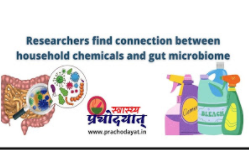
The gut microbiome, the community of microbes that live in our intestinal tract, has become of increasing interest to researchers in recent years. The microbes in our gut, which include a large variety of bacteria and fungi, are thought to affect many processes, from nutrient absorption to our immunity, and an unhealthy microbiome has been implicated in diseases ranging from obesity to asthma and dementia. In the study, the researchers measured levels of ubiquitous semi-organic compounds in the blood and urine of 69 toddlers and preschoolers and then, using fecal samples, studied the children‟s gut microbiomes. The semi-volatile organic compounds they measured included phthalates that are used in detergents, plastic clothing such as raincoats, shower curtains, and personal-care products, such as soap, shampoo, and hair spray, as well as per- and polyfluoroalkyl substances (PFASs), which are used in stain- and water-repellent fabrics, coatings for carpets and furniture, nonstick cooking products, polishes, paints, and cleaning products. People are exposed daily to such chemicals in the air and dust in their homes, especially young children who might ingest them by crawling on carpets or frequently putting objects in their mouths.
When the researchers looked at the levels of fungi and bacteria in the gut, they found that children who had higher levels of the chemicals in their bloodstream showed differences in their gut microbiome. Children with higher levels of PFASs in their blood had a reduction in the amount and diversity of bacteria, while increased levels of phthalates were associated with a reduction in fungi populations.
The correlation between the chemicals and less abundant bacterial organisms was especially pronounced and potentially most concerning, Gardner said. "These microbes are perhaps not the main drivers and may have more subtle roles in our biology, but it might be the case that one of these microbes does have a unique function and decreasing its levels may have significant health impacts," she said.
https://news.wsu.edu/2020/11/12/researchers-find-connection-household-chemicals-gut-microbiome/
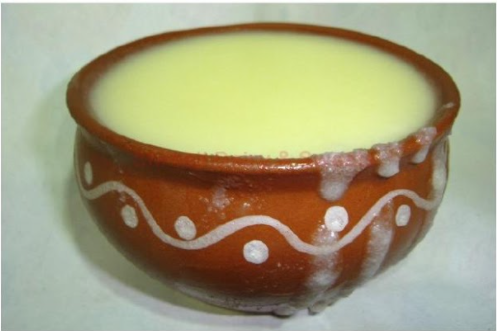
Ghee is medicine but modern doctors blame it for all life style diseases. They even prescribe ban at home.Well, urban dwellers disconnected from Gau based villages must not consume ghee available in their super markets. It is indeed deadly.But this does not mean all variety of ghee is bad. Rural India is where we can find ideal case studies. A study on a rural population in India showed a significantly lower prevalence of coronary heart disease in men who consumed higher amounts of ghee.
"Asian Indians previously had a low incidence of coronary heart disease and for generations had been using ghee in their cooking, which is low in PUFAs such as linoleic acid and arachidonic acid. The epidemic of coronary heart disease in India began two to three decades ago when traditional fats were replaced by oils rich in linoleic and arachidonic acid, as well as trans fatty acids which comprise 40% of vanaspati. Adulteration of commercially prepared ghee with vanaspati is also prevalent in India."
Ghee prepared from desi Gau‟s milk by churning is an elixir. If you can avail it, get it at any cost! Yes, at any cost! It will be cheaper than your medical bills. Be wise, at least health-wise.
Association of dietary ghee intake with coronary heart disease and risk factor prevalence in rural males.
https://www.ncbi.nlm.nih.gov/pubmed/9212571
Gou Gyaan – Tho Tho
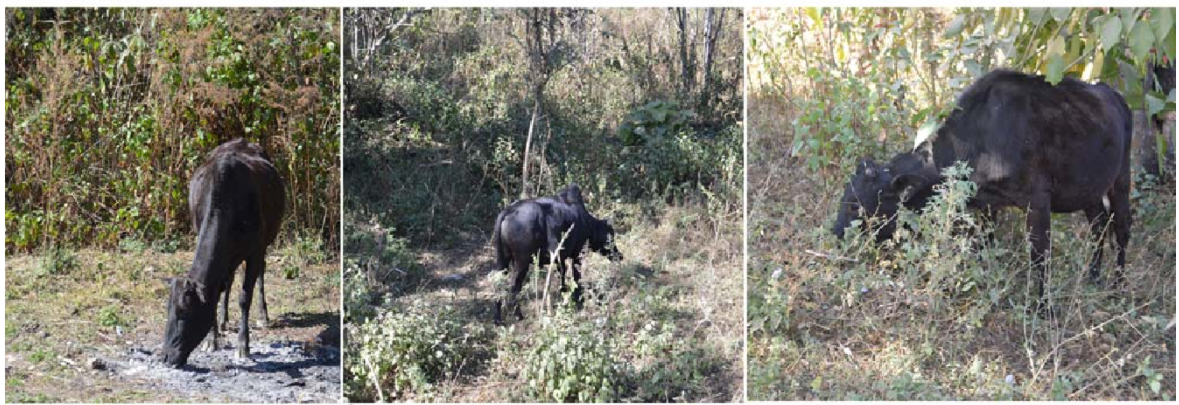
Tho Tho (Nagaland)
Virtual Events (March – Sept 2020)
Panchagavya : A Divine Medicine - Dr. Hitesh Jani ,November 1st ,Sunday,2020
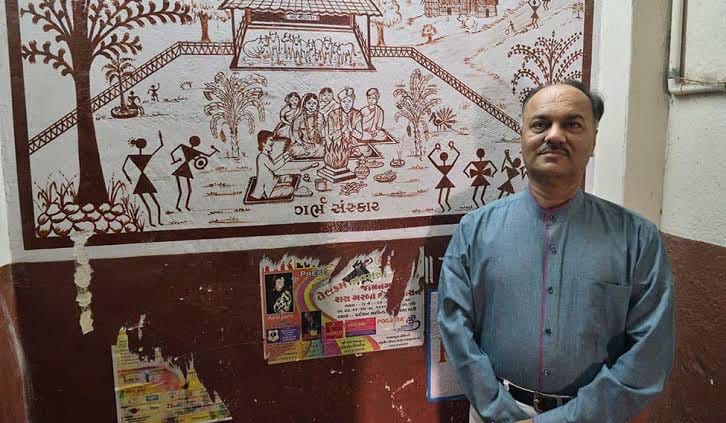
Dr.Hitesh Jani who is a pioneer in the field of Desi Cow based Panchagavya and Ayurveda, spoke about Panchagavya and it's medicinal properties .For watching the entire video, https://www.facebook.com/wegopals/videos/3422519881172714
Introduction to Ethnoveterinary Practices -Professor Shri. PUNNIYAMURTHY, N,December 12,2020,Sunday

Introductory training on " Ethnoveterinary Practices "was conducted by Shri.Punniyamurthy,Emeritus professor cum expertise in veterinary pharmacology, phyto-medicine and clinician specialized in the use of medicinal plants in livestock and promote concept of one health. Initiated Mainstreaming EVP.A formal series of virtual training sessions for interested farmers on "Ethnoveterinary Practices" will be initiated by GoPals in association with professor punniyamurthy starting on January 2nd 2021 ,saturday to alleviate the problems faced by farmers rearing cows.For more details regarding the training,reach out to info@wegopals.com or whatsapp@9535935622
Ethno Veterinary Training
Support A Cowherd
SAC – Team GoPals conceptualized Support A Cowherd (SAC) initiative, initially with a view to provide assistance to farmers rearing desi cows by helping them in creating fodder bank for the calves. With feedback from donors of SAC and other subject matter experts the scope of SAC was expanded to the following broad themes as each and every farmer had their aown challenges.The entire project was conceptualized by ideas from Shri Vaidyanathan, Professor (IIMB) Retired and part of National Security Advisory Team. We gratefully acknowledge him for his ideas and suggestions which are incorporated in this project.
For terms and conditions of Support A Cowherd, kindly connect with our volunteers team Mr. Srikanthan – 9880233209 and Mr. Sadashiva Reddy – 9066329326 or write mail to info@wegopals.com
Now Support A Cowherd is enhanced and available for 1 /2/3/5/10 for a full year or 6Months/3months for 1 year /custom amount.For more details, https://www.wegopals.com/support-a-cowherd/
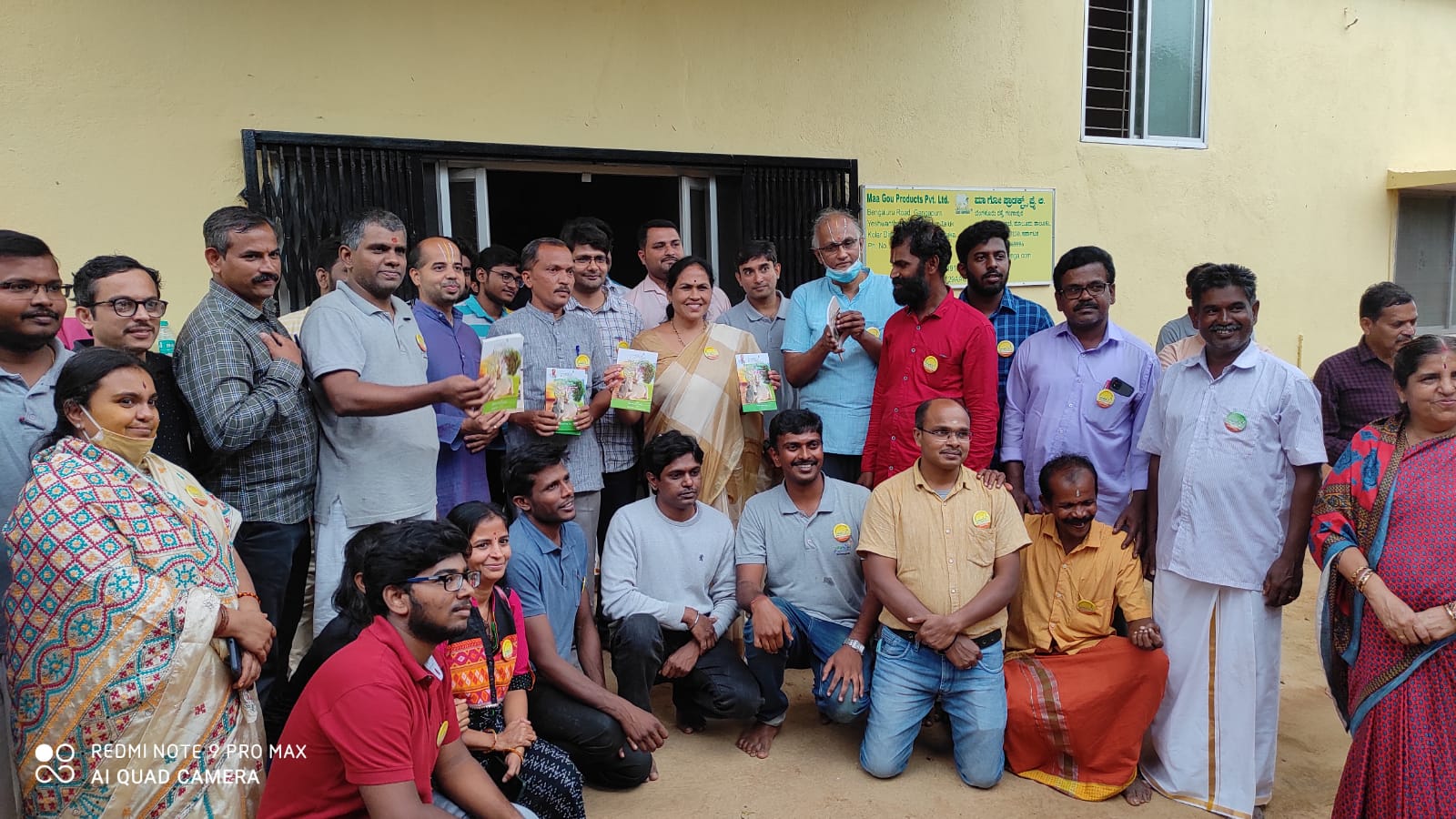

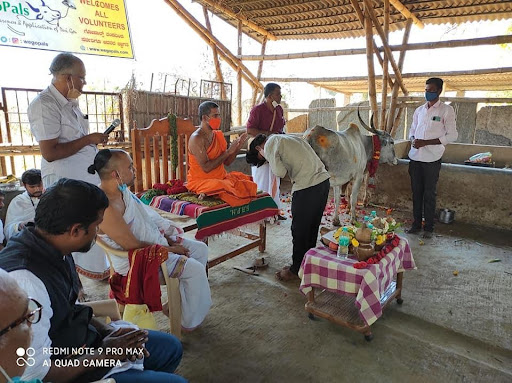
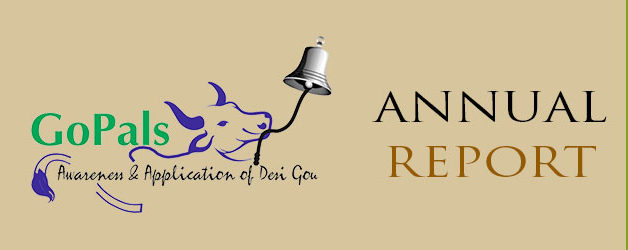


Headquarters:
GoPals Charitable Trust #78,
2nd Main Road, Kanaka Layout,
Banashankari 2nd Stage,
Bengaluru, Karnataka - 560070, INDIA.